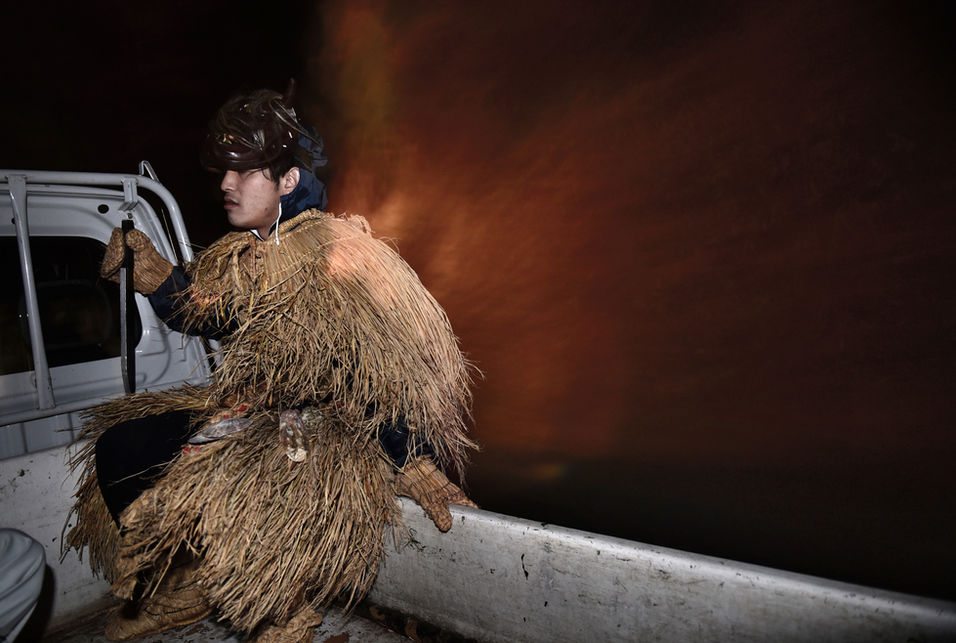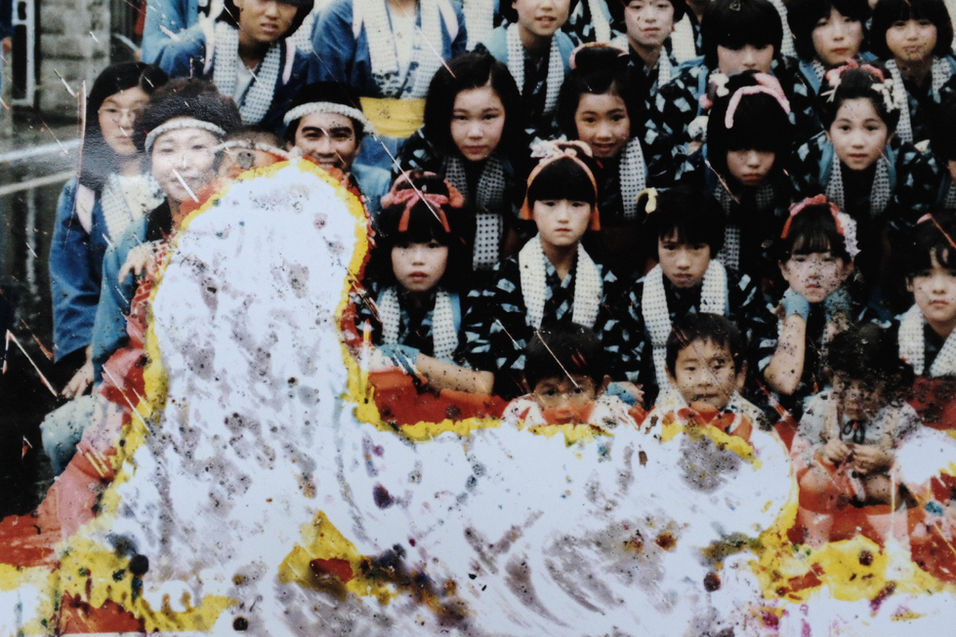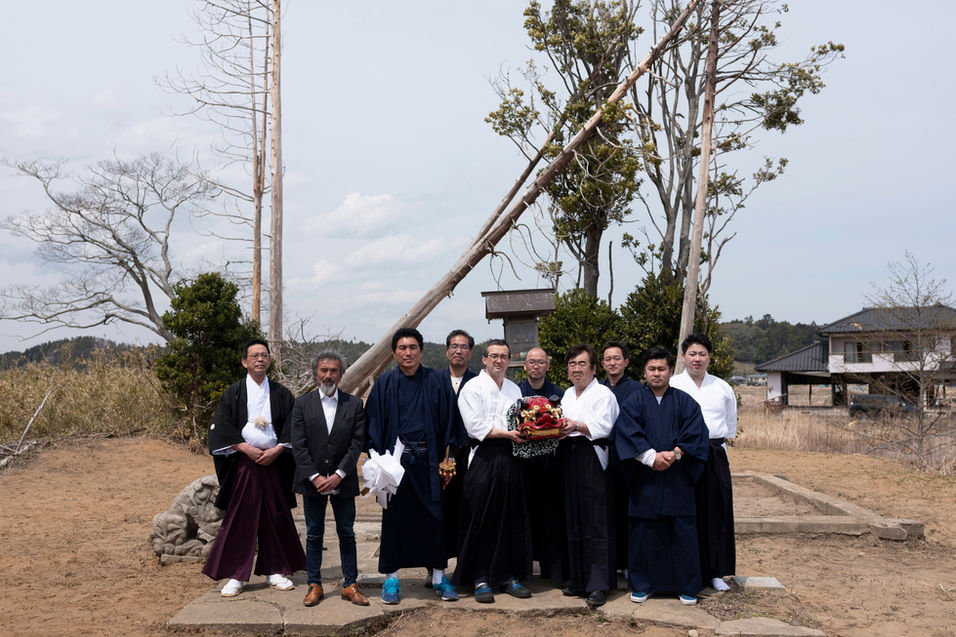THREADS IN THE DARK 紡ぎ音(つむぎね)
The so-called "Michinoku" coastal areas of Iwate, Miyagi, and Fukushima in JAPAN were devastated by the tsunami of the Great East Japan Earthquake and the accident at the Fukushima Daiichi Nuclear Power Plant. The people living in this region have been living in harmony with nature for a long time. Fishing and agriculture are the main industries that depend on nature. The raging sea and the cold damage caused by the frequent "Yamase" floods. In this region, where the nature is one of the harshest in Japan, the only thing we can do against it is to pray to the gods. These prayers took shape in the form of festivals and folk performing arts. Through them, the people were connected to the land where they lived and continued to live from generation to generation.
Today, when fishing and agriculture are more stable than in the past, this awareness is relatively rare. However, the act of prayer, taught to us by our grandparents and parents and taken for granted, continues to exist unconsciously and as a matter of course. That is why they continue to be closely connected to the land and people's lives, and are so ingrained in the history and memories of the land that they can be called grudges. Even if it has become a skeleton.
After the earthquake, the meaning of festivals and performing arts has changed even more. The communities themselves disappeared or were forcibly evicted from their land, and their connection to the land itself was severed. It is also the severing of the connection with the gods of the land. The only thing that connects them to their (former) land is the festivals and folk performing arts. The only way to connect is to keep the festivals and performing arts alive. What's more, this is the only thing that connects the people who once had roots in the same land.
The displaced residents can come together only for festivals and performances. They are able to connect with their hometown. No, because they don't want to lose the only connection they have to their hometown, they are trying to keep it alive in any way they can, even if it means putting their lives on hold.
As if they are spinning the only thread left in the darkness.
がれきが散乱している町の中を山車を動かす人たち。その姿に神聖なものまで感じ心を動かされた反面、身内を亡くし、家を失い、生活もままならないときに、どうして「祭り」をするのだろうかという疑問が湧き上がった。「復興」を目指して頑張る姿。そんな簡単なヒロイズムだけでは片付けられないものがあるのではないだろうか。その奥にあるものを、知りたくなった。
東日本大震災の津波と福島第一原発事故で被災した岩手、宮城、福島のいわゆる「みちのく」の沿岸部。この地方に生きる人たちは古くから否応なしに自然と対峙し共生してきた。漁業や農業という自然相手の産業が主であった。荒れ狂う海、たびたびやってくる「やませ」による冷害。日本の中でも厳しい自然であったこの地方で、その自然に対してできるのは神に祈ることしかない。その祈りが形となったのが祭りであり民俗芸能だった。それらを通して自分たちの住む土地とつながり代々生き続けてきた。
漁業、農業も昔より安定している現代ではその意識は比較的希薄であることは確かだろう。しかし祖父母、父母から教えられ、当たり前にやってきた祈りの行為は無意識に、当たり前に存在し続けるものだ。だから変わらずに土地や生活と密接につながり続け、怨念とも言えるぐらい土地の歴史と記憶となって染み付いている。たとえ、形骸化されてしまっていても。
震災があり、祭礼や芸能の意味はさらに変化した。集落そのものがなくなったり、自分たちの土地から強制的に追い出され、住んでいる土地そのものとのつながりが断たれたのだ。それはその土地との神とのつながりが切れることでもある。そしてその(もはやかつての)土地とつながる唯一のものが祭りであり民俗芸能だけとなった。祭りと芸能を絶やさないことでしか、もはやつながる手段がなくなったのだ。それ以上に、かつて同じ土地に根を張り続けた人たちどおしをつなげているのも、もはやこの存在しかない。
岩手県陸前高田市の慰霊の祭礼である「動く七夕」。祭組のひとつ「駅前組」は支援や助けを借りずに少なくなった人数だけでできる祭りを続けた。自分たちだけでできないと同じことをこの先何十年も続けられないからだ。田舎を出た若者たちも祭りの日には必ず帰ってくる。胸の中に深い意味合いはなくても、「楽しいから」と続ける若い人たちが今後を支えていく大事な力なのだろう。
福島県浪江町。津波で全て流された請戸地区は消滅し、原発事故でも立ち入り禁止区域になる。「請戸の田植踊」の踊り手の少女たちは、「友達と会えるから」と踊りの披露を続ける。友達と会いたいという気持ちだけが、その親や関わる人たちと「請戸」とのつながりを保っている。「川添の神楽」の踊り手たちは、毎年日本で4番目に広い県内を車で走りまわり、各地に離散してしまった住民たちの少しでも多くに披露している。震災前は歩いてまわれる範囲だった。「ああ、津島に帰ってきたようだよ」と、震災から7年後に復活した「南津島の田植踊」を見て、お年寄りが涙を流す。
離散した住民たちは、祭と芸能披露のときにだけ集まることができる。自分たちの故郷とつながることができる。いや、唯一のつながりを失いたくないからこそ、彼らは生活を差し置いてもどんな形でも残し続けていこうとしている。
暗闇にただひとつ残された糸を、紡ぎ続けるように。




























